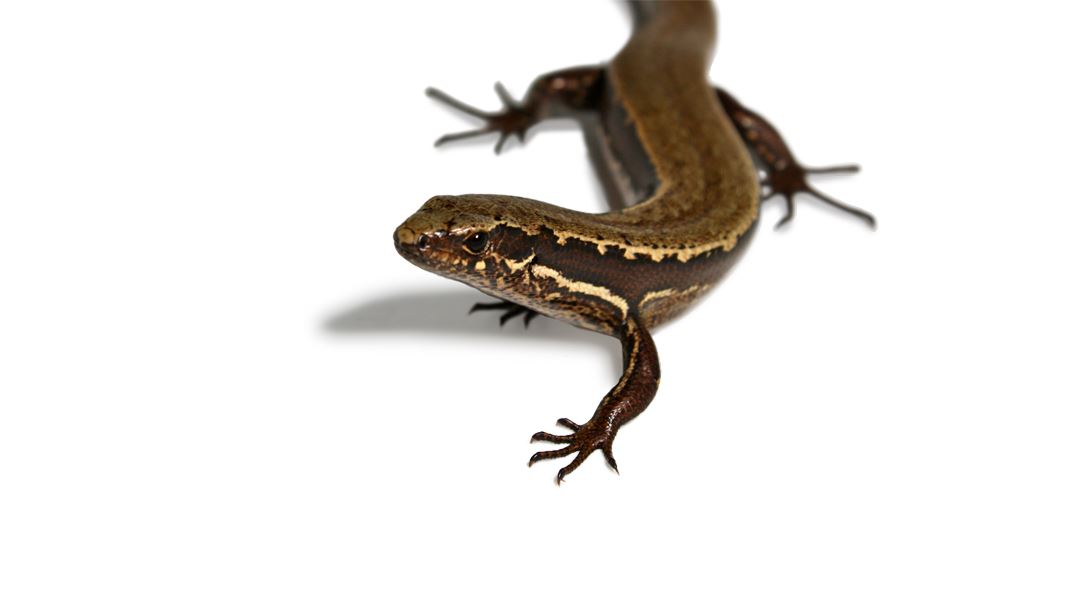Population: (2017) unknown but <1 hectare of occupied habitat.
National status: Endemic
Conservation status: Threatened–Nationally Critical
Whirinaki skink conservation
A single Whirinaki skink (Oligosoma "Whirinaki") was first found in central North Island forest in 2003 but is known only from one individual.
In 2013 a new population was discovered at Bream Head and this is thought to be the same species. It is believed the Bream Head population is increasing because of the extensive predator control conducted by the Bream Head Conservation Trust. It is locally abundant within a small one hectare area.
Little is known about this species but it probably requires open forest habitat near cliff edges and may be partially arboreal. We're not certain whether they are difficult to detect or extremely rare.
We expect mice to be a significant predator, but rats, mustelids, and cats will also be preying upon skinks. Plague skinks, an introduced competitor, may also impact on Whirinaki skink.
Research
Unitec scientists are researching the impacts of the growing plague skink population on Whirinaki skink, and are also seeking to better understand the life history of Whirinaki skink.
You can help
Thoroughly check your gear for plague skinks before departing to an area that is free of plague skinks.
Report all lizards sightings to the local DOC office. Any records of lizards are important and help build our understanding of lizard distribution. Significant discoveries are often made by following up observations from locals.
